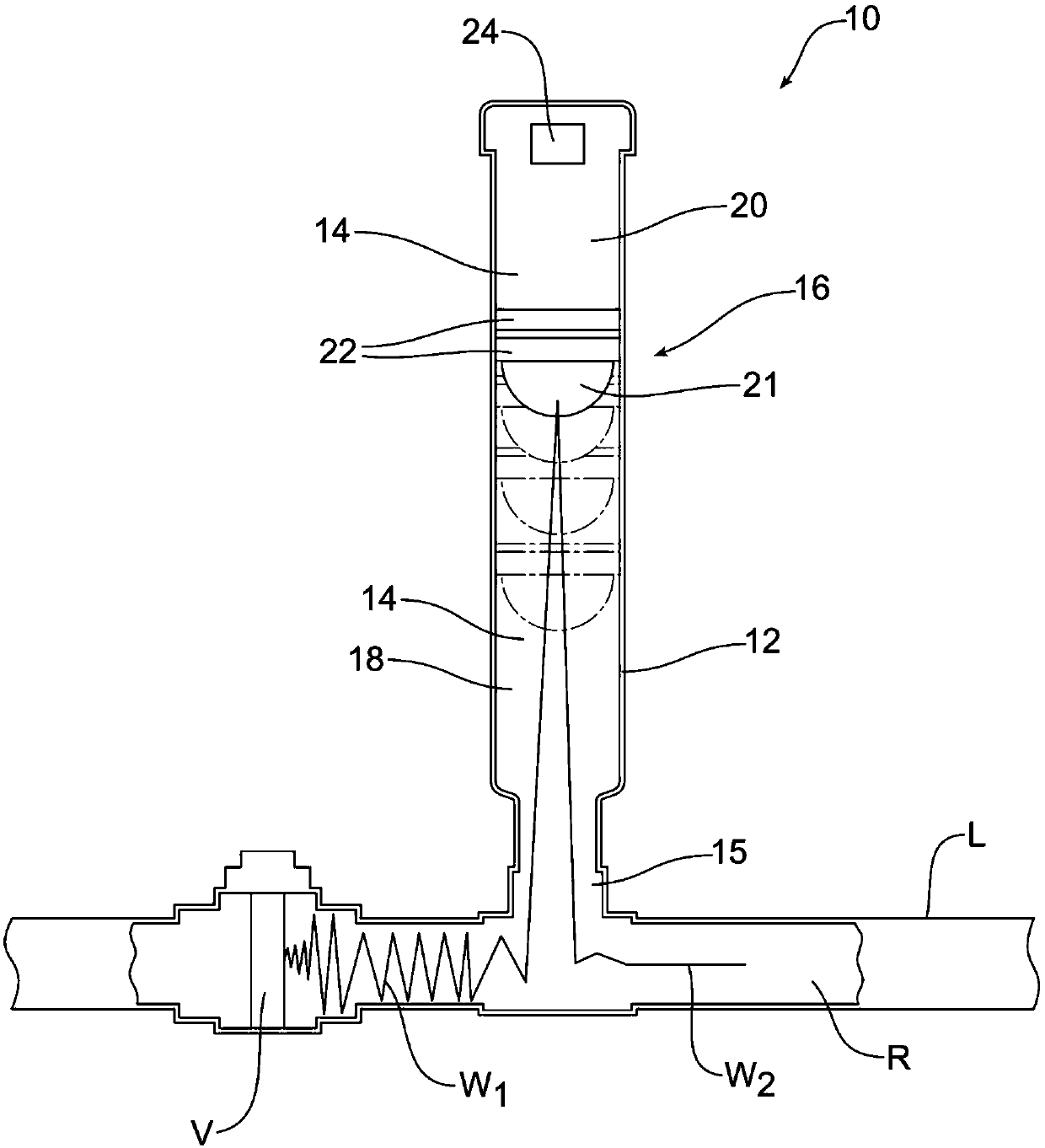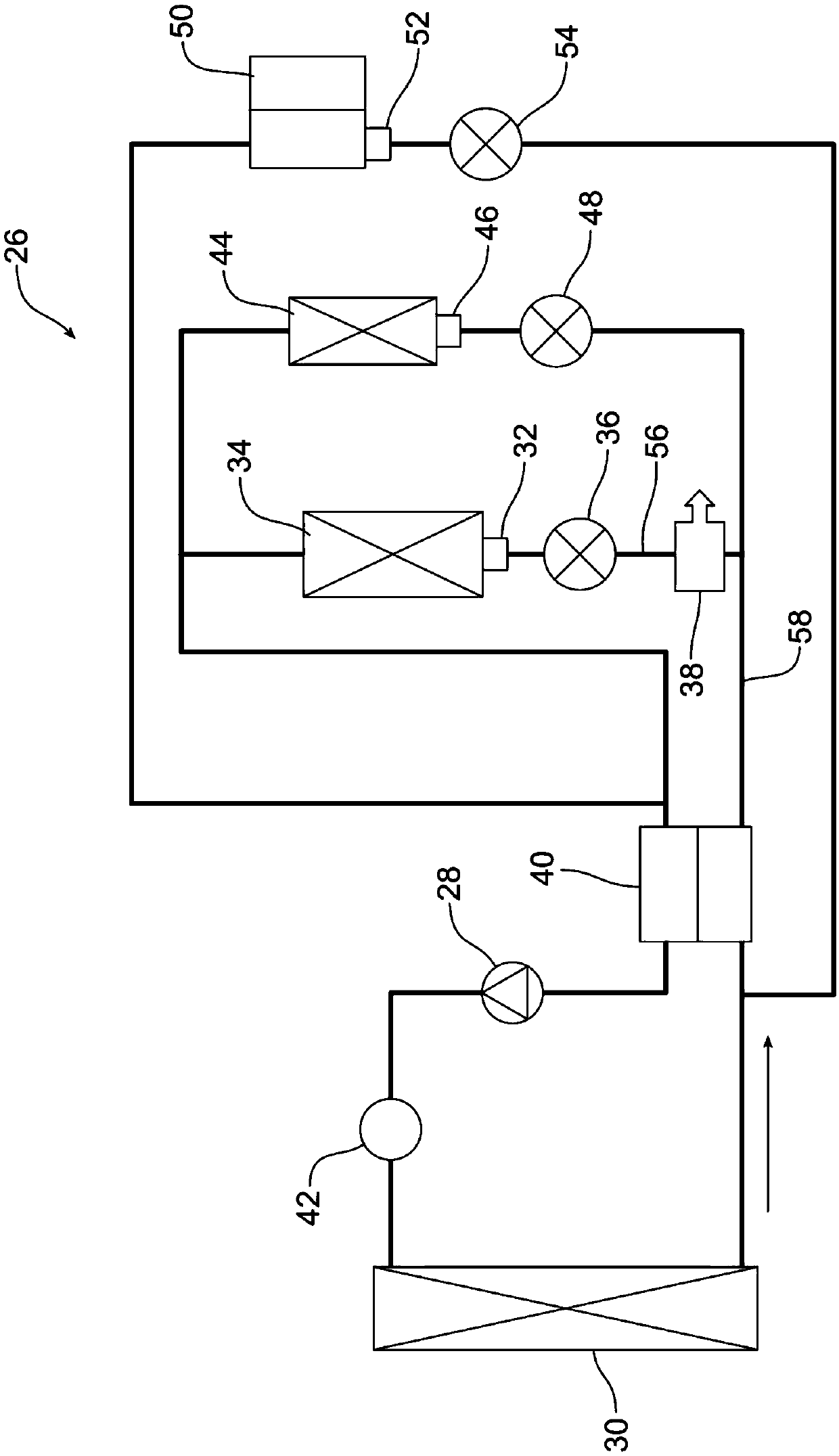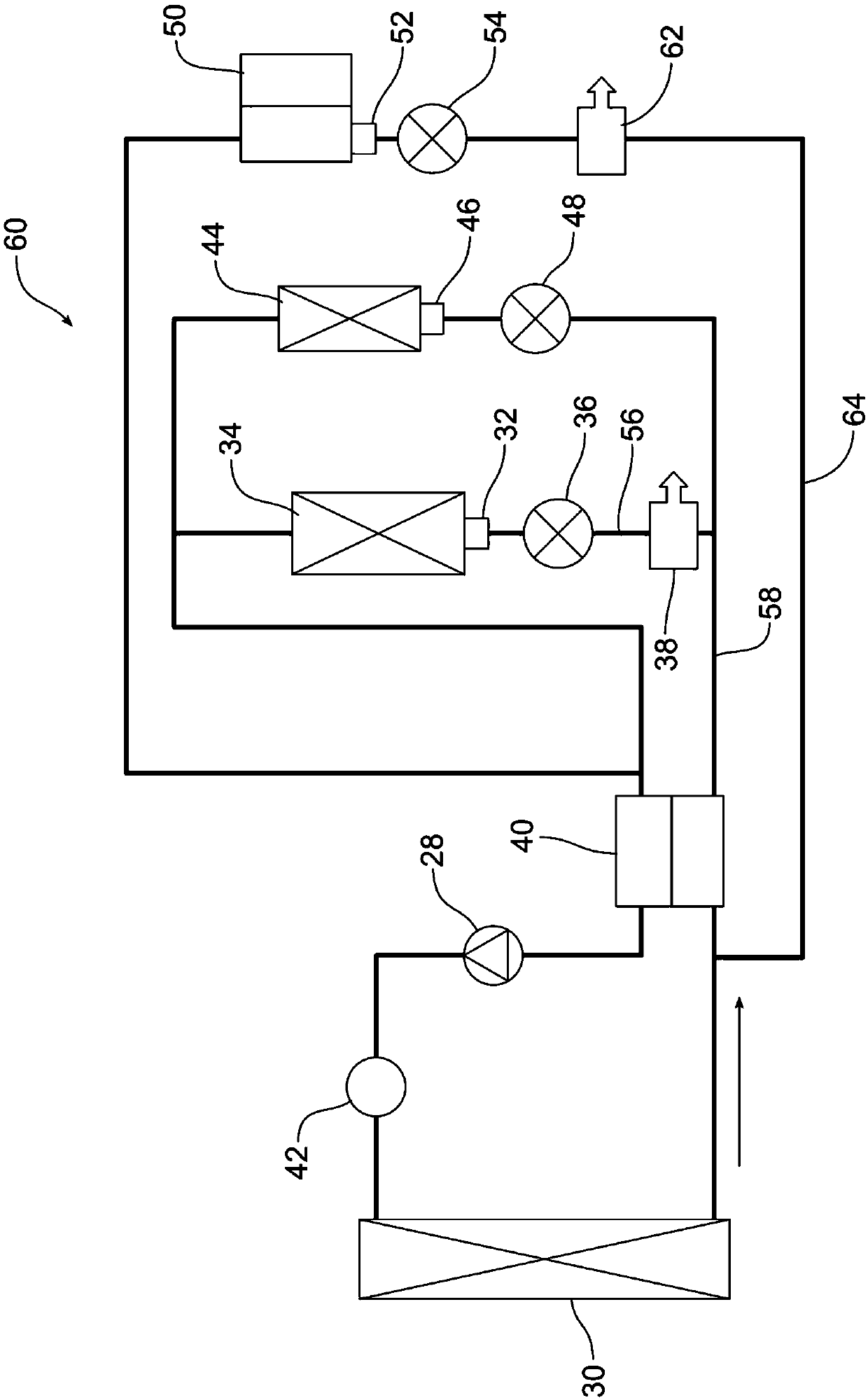Refrigerant hammer arrestor and refrigerant loop incorporating that refrigerant hammer arrestor
A refrigerant circuit, refrigerant technology, applied in the direction of refrigeration and liquefaction, refrigerators, refrigeration components, etc.
- Summary
- Abstract
- Description
- Claims
- Application Information
AI Technical Summary
Problems solved by technology
Method used
Image
Examples
Embodiment Construction
[0027] now refer to figure 1 , which schematically shows a new and improved refrigerant hammer eliminator 10 . The refrigerant hammer eliminator 10 includes a housing 12 . The housing 12 includes an internal compartment 14 . In the embodiment shown, said internal compartment 14 communicates with the refrigerant line L upstream of the shut-off valve V through an open end 15 . Piston 16 is received in housing 12 . The piston 16 divides the inner compartment 14 into a first chamber 18 and a second chamber 20 . In the illustrated embodiment, the piston 16 includes a hemispherical face 21 and two piston rings 22 for providing a smooth sliding action along the inner wall of the housing 12 .
[0028] A damping mechanism, generally indicated at 24 , is provided to slow displacement of the piston 16 within the housing 12 . In the illustrated embodiment, the damping mechanism 24 is arranged in the second chamber 20 .
[0029] The damping mechanism 24 is preferably a variable dampi...
PUM
 Login to View More
Login to View More Abstract
Description
Claims
Application Information
 Login to View More
Login to View More - R&D
- Intellectual Property
- Life Sciences
- Materials
- Tech Scout
- Unparalleled Data Quality
- Higher Quality Content
- 60% Fewer Hallucinations
Browse by: Latest US Patents, China's latest patents, Technical Efficacy Thesaurus, Application Domain, Technology Topic, Popular Technical Reports.
© 2025 PatSnap. All rights reserved.Legal|Privacy policy|Modern Slavery Act Transparency Statement|Sitemap|About US| Contact US: help@patsnap.com



